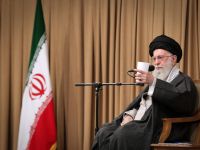A new obesity unit at a UAE hospital has succeeded in applying new methods to handle obesity without resorting to surgery, according to a report by the Gulf News.
The paper says that the new methods are attracting overweight men and women seeking to acquire slimmer figures.
Mohammed Farakah, Al Jazeera Hospital's general surgery and laparascopy consultant, told the paper that before being offered treatment, the patient must undergo several examinations.
"We conduct medical tests on general health, obtain information about eating habits and inquire about previous efforts to lose weight. It is also important to check on diseases that may affect the patient as a result of excess weight," he said.
“The second phase is where we choose the treatment that will benefit the patient and provide the best results. Surgical intervention takes place via a gastric balloon through endoscopy," he said.
The intra-gastric balloon benefits patients who are extremely obese, patients with contra-surgical indications, those who are under 18, and those who cannot handle dieting, he said.
"It is a simple procedure carried out under local anesthesia in around 10 to 20 minutes. Without making any opening, we insert a 500 to 700 square millimeter balloon through the mouth, into the stomach, to give the patient a feeling of fullness. The balloon limits the amount of food the patient eats."
Farakah, who has 15 years' experience in laparascopic surgery, believes this is a good solution for patients who cannot tolerate dieting. "The patient can eat whatever he wants, but the quantities are limited. After fixing the balloon, we give the patient a dieting plan with special instructions. But the balloon must be removed every six months."
Another, more complex, procedure is also available. "It is called the gastric band operation. We divide the stomach into a small upper part and a larger lower part. The small part is the one that receives the food and gives the patient a sense of fullness. "This type of surgery takes place under general anesthesia and takes about two hours." Most of his patients are women 24 to 52 years of age, he said, "but we also have men on the waiting list.
"What is advanced about this operation, compared with what was being done five years ago, is that we make it with endoscopy without the need to open the stomach. In fact, that is better for an obese patient, who could be subject to infection or hernia from the cut in the stomach.
"Also, it is in favor of the patient's health to finish the operation in a short time and start walking instead of staying in bed for a long time waiting for the wound to heal."
The patient will reach his or her ideal weight within a year. "The patient will get rid of all the excess weight in this period. In the first three weeks after the operation, the patient should take only fluids like yogurt, milk and juice, and we don't want him to undergo any diet until he recovers fully. From the fourth week, he should start taking solid food and that's when he begins losing weight."
The gastric band has advantages over the more complicated gastric bypass, said the consultant.
"These involve cutting the stomach from the inside, which is dangerous. The gastric band is safer because we only put a band on the stomach and we can take it away, tighten or loosen it without touching the stomach from the inside or making a wound in the abdomen.
"In the gastric band operation, there is no bypass of the normal food passage, so absorption of important food materials, like iron and calcium, takes place normally. Also, the band is adjustable - we can increase or decrease its diameter.” – Albawaba.com
© 2001 Al Bawaba (www.albawaba.com)







